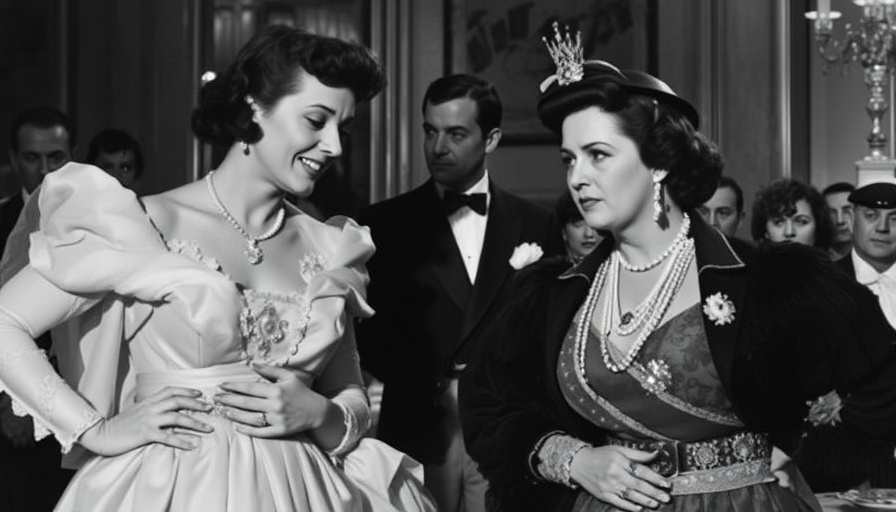
Rethinking Our Relationship With Industry and Nature
In an age where industrialization has profoundly shaped our landscapes, Edward Burtynsky's photographs serve as powerful reminders of the interplay between human progress and environmental degradation. His latest exhibition, The Great Acceleration, showcases a staggering 70 photographs that illustrate this relationship, drawing viewers into a striking juxtaposition of beauty and devastation. Through his lens, Burtynsky invites us to witness the beauty found within the chaos of industrial sites—from the vibrant colors of mined landscapes to the geometric patterns created by oil refineries. Picking up a camera at the age of 12, Burtynsky found a medium that allowed him to capture these contrasts with astonishing immediacy.
From Adolescent Artistry to Environmental Advocacy
Burtynsky's journey into photography is deeply rooted in his upbringing. Growing up in a family where artistry coexisted with factory work, he found himself straddling two worlds—one of creativity and another dominated by industry. His firsthand experience in factories as a tool and die maker shaped his view on the growing scale of production and its effects on the environment. In this regard, his work reflects not only a personal narrative but also a collective consciousness regarding industriality's relentless expansion. By capturing these poignant images, Burtynsky urges us to consider what our rapid growth means for the earth and our future.
Visual Storytelling: The Language of Photography
Burtynsky's photographs can be likened to Rorschach tests, as he suggests; they reveal more about the viewer than about him. People often project their feelings, experiences, and beliefs onto his images, transforming each encounter into a personal reflection. This aspect of his work emphasizes the subjective nature of art and how visual storytelling can bridge the gap between observer and observed. As digital nomads, the audience is encouraged to contemplate their own environmental impacts while gazing at these striking images. Each photograph becomes a catalyst for action, prompting discussions about sustainability and what it means to travel responsibly.
The Power of Perspective: Elevating Our Awareness
One of the hallmarks of Burtynsky’s style is his use of aerial photography. By capturing industrial sites from above, he compels viewers to confront the stark realities of environmental destruction from a new angle. This expansive perspective underscores the interconnectedness of our global economy and the environmental costs of consumerism. As traveling citizens, acknowledging this interconnectedness can enrich our experiences and inspire a more thoughtful approach to pursuing adventures. The question Burtynsky poses through his work resonates with digital nomads: how can we tread lightly and respectfully upon the landscapes we love?
Future Predictions: Navigating an Unsustainable Path
As we embrace a future characterized by climate uncertainty, Burtynsky’s work stands as a beacon of reflection and possibility. He recognizes that the current trajectory of industrialization is unsustainable—a sentiment echoed by scientists and environmentalists worldwide. By exposing the impact of human activity on a massive scale, he hopes to cultivate a greater sense of responsibility among individuals, particularly travelers who witness these changes. The call for sustainable practices is more pressing than ever, and Burtynsky’s work invites us to be part of the solution rather than passive observers.
Actionable Insights: Transforming Awareness into Action
In considering Burtynsky’s art, digital nomads can draw actionable insights on sustainability practices. Being conscious consumers is essential; it involves choosing eco-friendly accommodations, supporting local economies, and advocating for responsible tourism. Rather than shying away from the environmental consequences of travel, embracing them can lead to more meaningful exploration and a vital part of planetary healing. Burtynsky reminds us that we hold the power to effect change—not just through our travels, but in our daily choices.
By engaging with Burtynsky’s photographs, we are called to question our role within the world’s industrial machine. Every click of the shutter and every captured moment reflects the delicate balance we must maintain in our pursuit of progress and preservation. In his words, “When people tell me about what they see in an image, I get to learn more about them than they probably learn about me.” This sentiment encourages travelers, seekers, and dreamers to reflect on landscapes—both natural and industrial—and transform that reflection into mindful action for a sustainable future.
 Add Row
Add Row  Add
Add 




Write A Comment